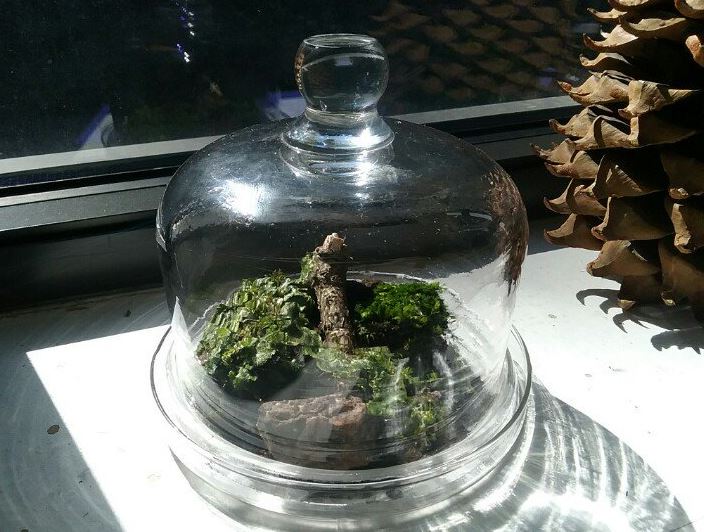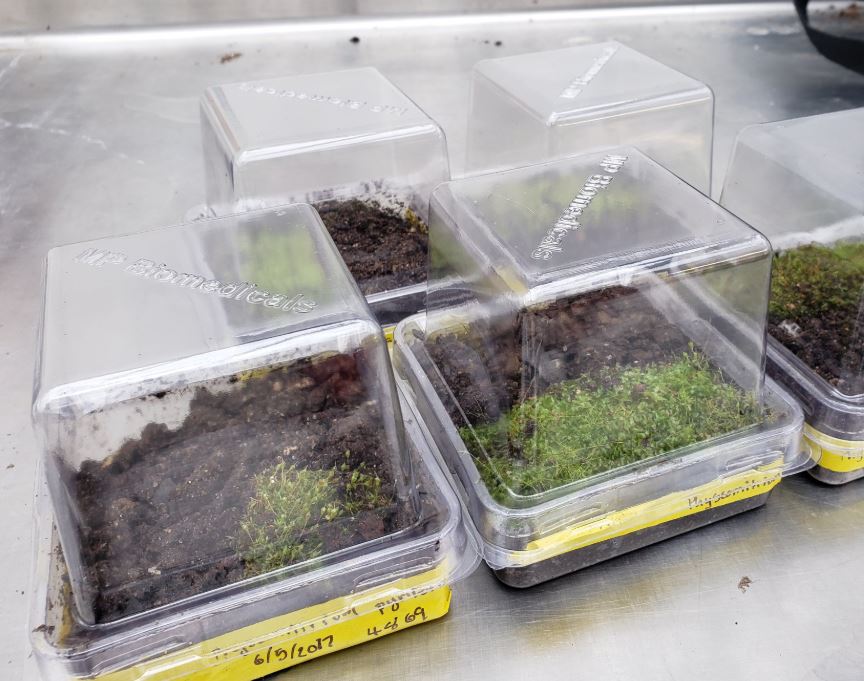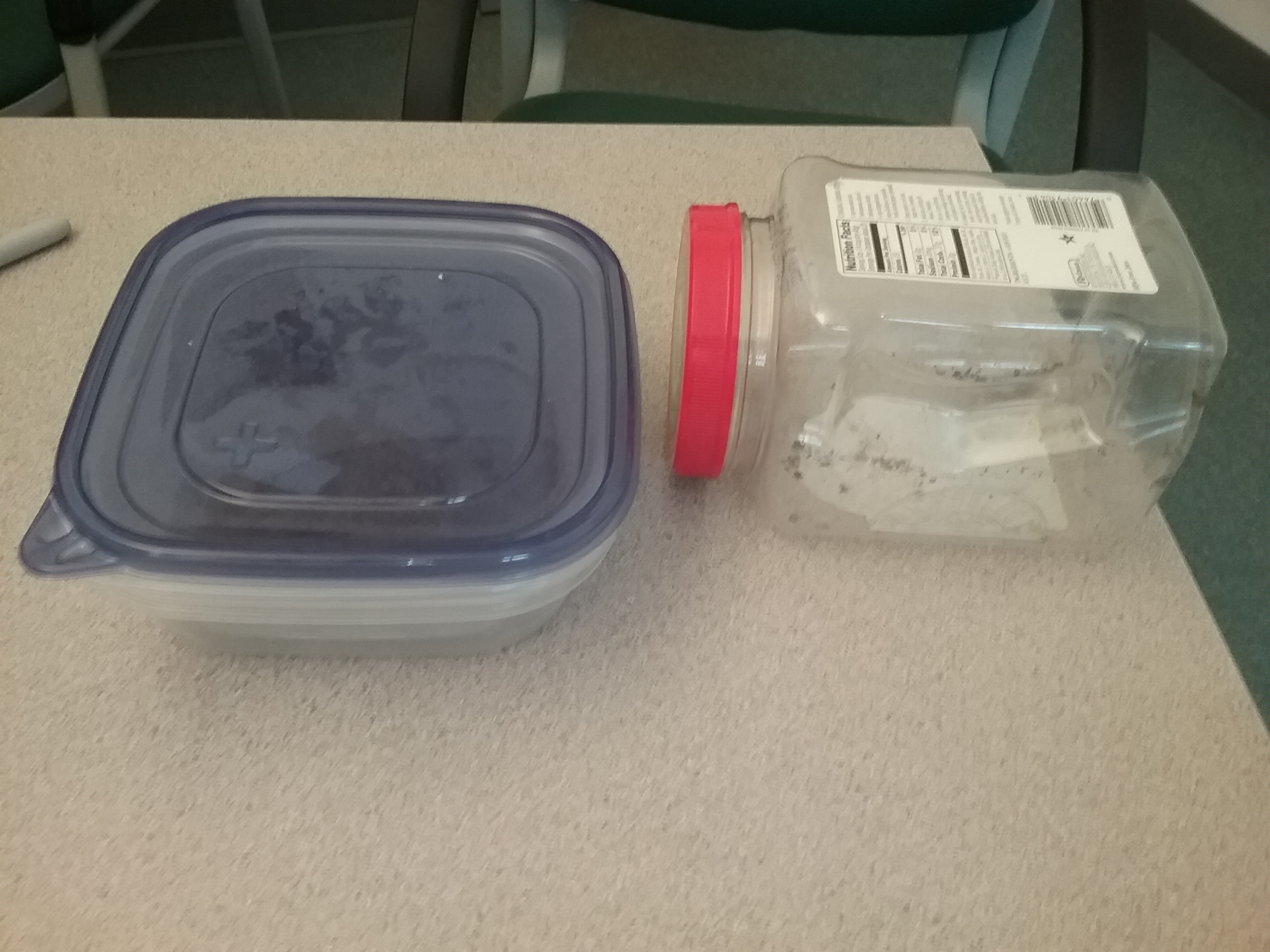Moss terraria 101 (and making Physcomitrium mature indoors)
Hello to all Physcohunters!
Many of you are already experts spotting those goblet mosses out there. However, they are often found when the capsules are still too young and green to be collected for our project. This is ok if you can record the location and return a few days later, but, what if you don't plan to return to that location? Is this a missed opportunity? Worry no more! This scenario is ideal to learn how to grow mosses in a terrarium.
BASIC MOSS TERRARIA

A simple bryophyte terrarium I kept for a few months
If you are interested in mosses and other bryophytes, you might like to know that they can be kept indoors without too much maintenance. The basics for a bryophyte terrarium is a closed transparent container that can hold a moist (saturated) atmosphere. It can be a fancy glass bell like the one I found around my lab, a jar, a plastic container, etc. In fact, this is basically what we do in our labs of Connecticut and Illinois to keep and propagate the Physcomitrium cultures that you send us.

The moist soil serves as a reservoir of water to keep hydrated the mosses. You can place this container virtually anywhere in your house, but many moss species in these terraria will do well in well lit conditions but protected from direct sunlight. Some condensation will likely appear inside the container, and that's ok (however, read below for the particular case of Physcomitrium). You can always open for a few hours the container if you want to reduce condensation as long as you keep inside enough humidity to keep the mosses hydrated.
These basic terraria can last for a decent amount of time (many weeks). However, often the new growth of mosses inside will not look too pretty and your initial arrangement may not look too well after a while. You may consider to replace them at that point.
Bryophytes are valuable biodiversity assets in many ecosystems and we will never advocate for heavy collecting in the wild just for aesthetic purposes. However, many common mosses that you can find in disturbed and populated areas, such as your backyard, sidewalks, etc, will grow well in a terrarium and will make more accessible its interesting life cycle. Since goblet mosses are indeed one of these very common and ubiquitous bryophytes , they are ideal for this purpose!
MATURING GOBLET MOSS FOR THE PHYSCOHUNT
Ok, so you found some green goblet moss in your weekend trip. It is still too young to be sent to the PhyscoHunt guys, but you don't want to miss this opportunity, so, what to do?
First, report the observation using iNat. Business as usual. And then, collect the green sample and prepare a mini-terrarium for a few days, Just enough time to let the capsules turn brown. This can be done in ANY sort of closed transparent container. Literally.

Examples of not-so-fancy terrarium containers in which I have matured goblet moss in the past. Even one of those zip-lock plastic bags will do the trick.
Make sure you include enough moist soil (or maybe a moist piece of towel paper) as a reservoir of water. Keep an eye on your moss during the next days, and take it out of the mini-terrarium to dry out completely once the capsules look brown, as explained in our previous post. There is, however, an important consideration: excess of humidity may make the capsules moldy. For some reason, during this stage of the development the goblet moss sporophytes are very vulnerable to fungi. This makes sense: Physcomitrium are ephemeral mosses, meaning that unlike perennial mosses (those that remain present in a spot during several seasons) they complete their life cycle in a relatively short period of time, and then they decay. In their natural environment, these mosses are used to a drop in humidity towards the last stage of their development.
What to do? Monitor your mini-terrarium closely: the leafy part of the moss should remain fresh and hydrated, but you should not see too much condensation. Instead of closing it completely, leave the container slightly open and monitor that the moss does not dry completely until the capsules turn brown.
Do you have questions for us?
Have you ever tried to keep a moss terrarium?
Feel free to make your comments below




Comentarios
How are you going to go about inducing polyploidy? Is it something as simple as chopping a sporophyte up and having it regenerate into a gametophyte so I that I could try it myself without needing an expensive setup?
Well, that is pretty much it, yes. Rather than chopping we cut the very young sporophyte in a few pieces and put them in agar medium. This process was actually described in the early 20th century! The setup is not expensive, it just needs some practice collecting the sporophytes at the right stage and trying to prevent contamination.
Añade un comentario